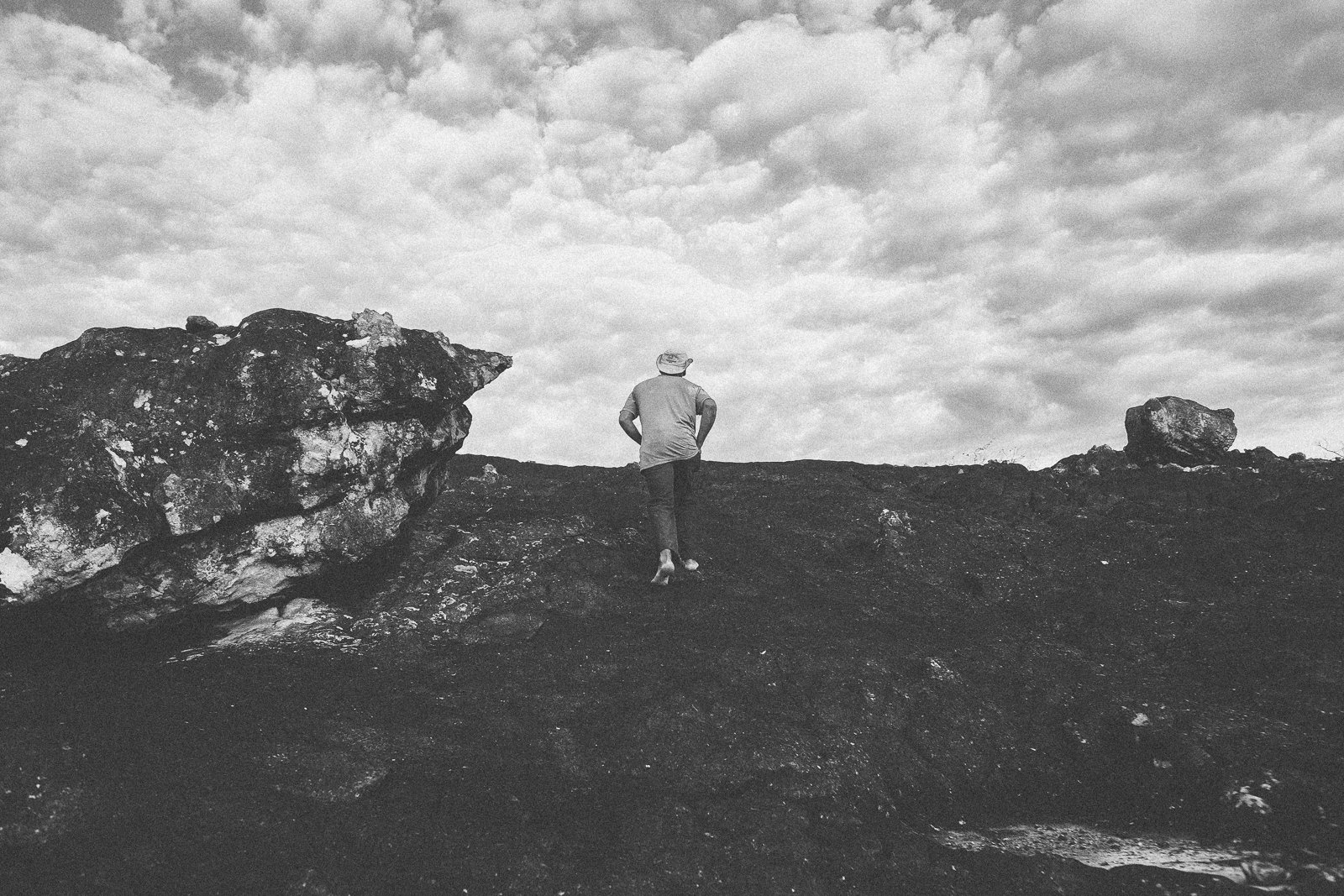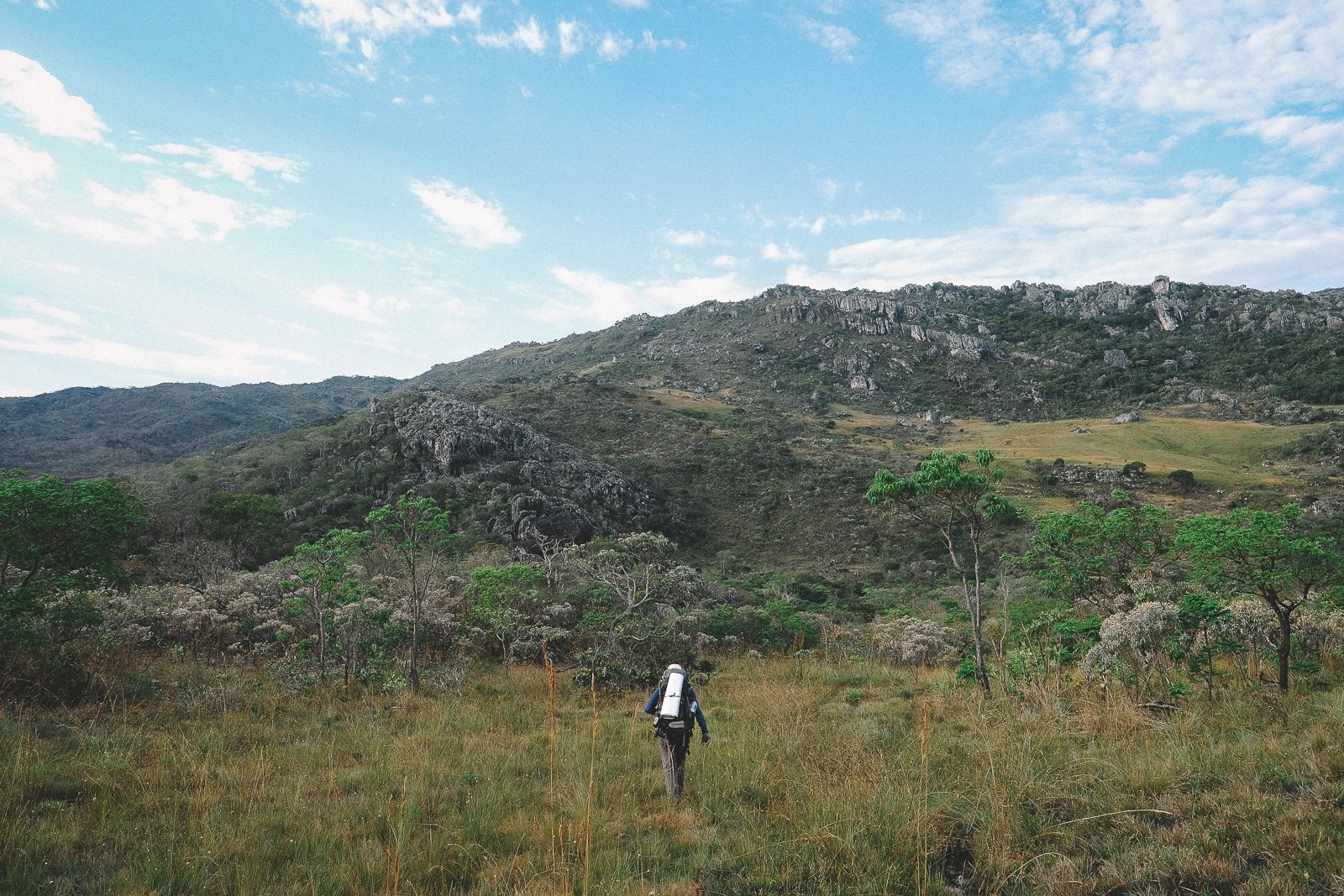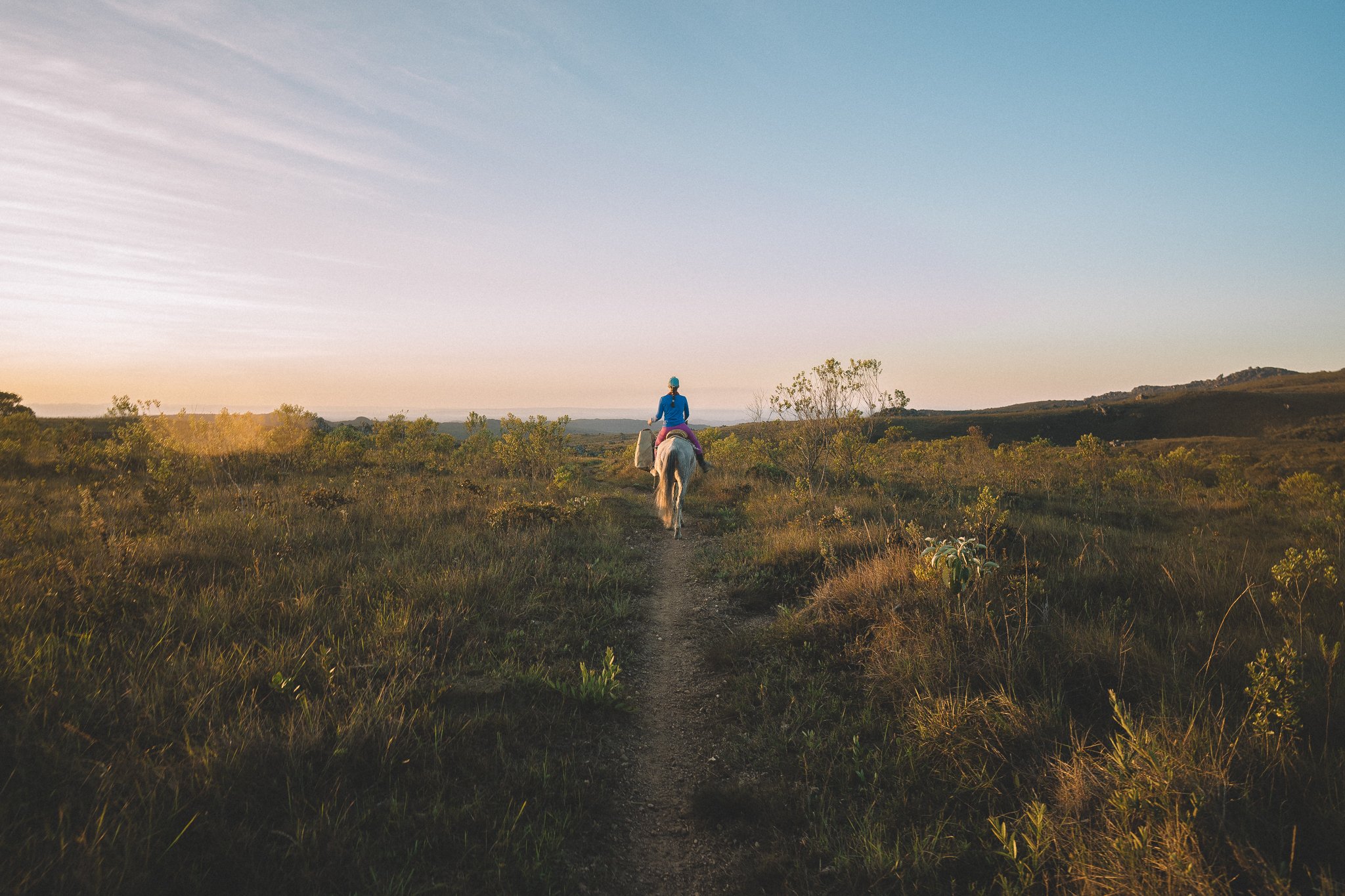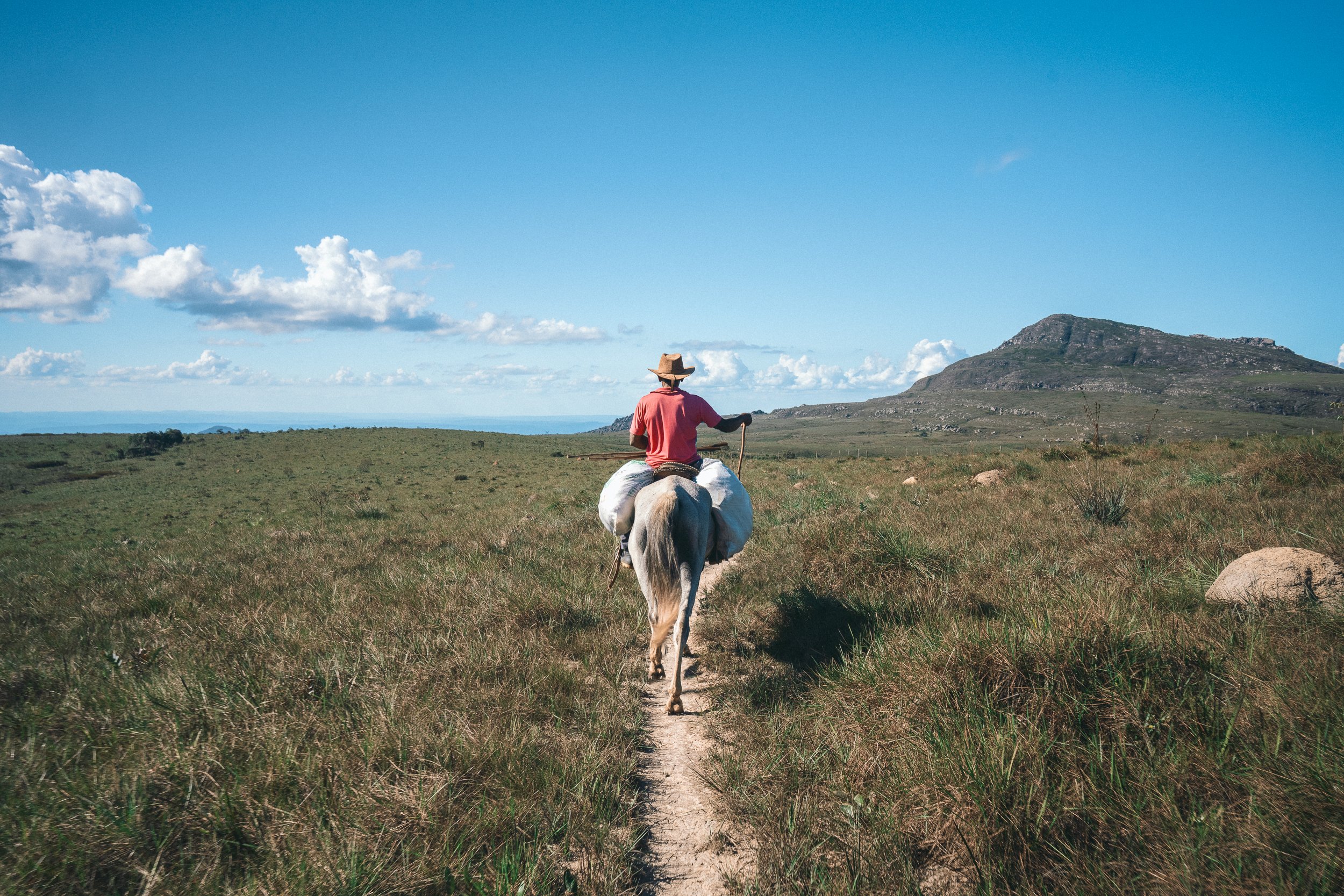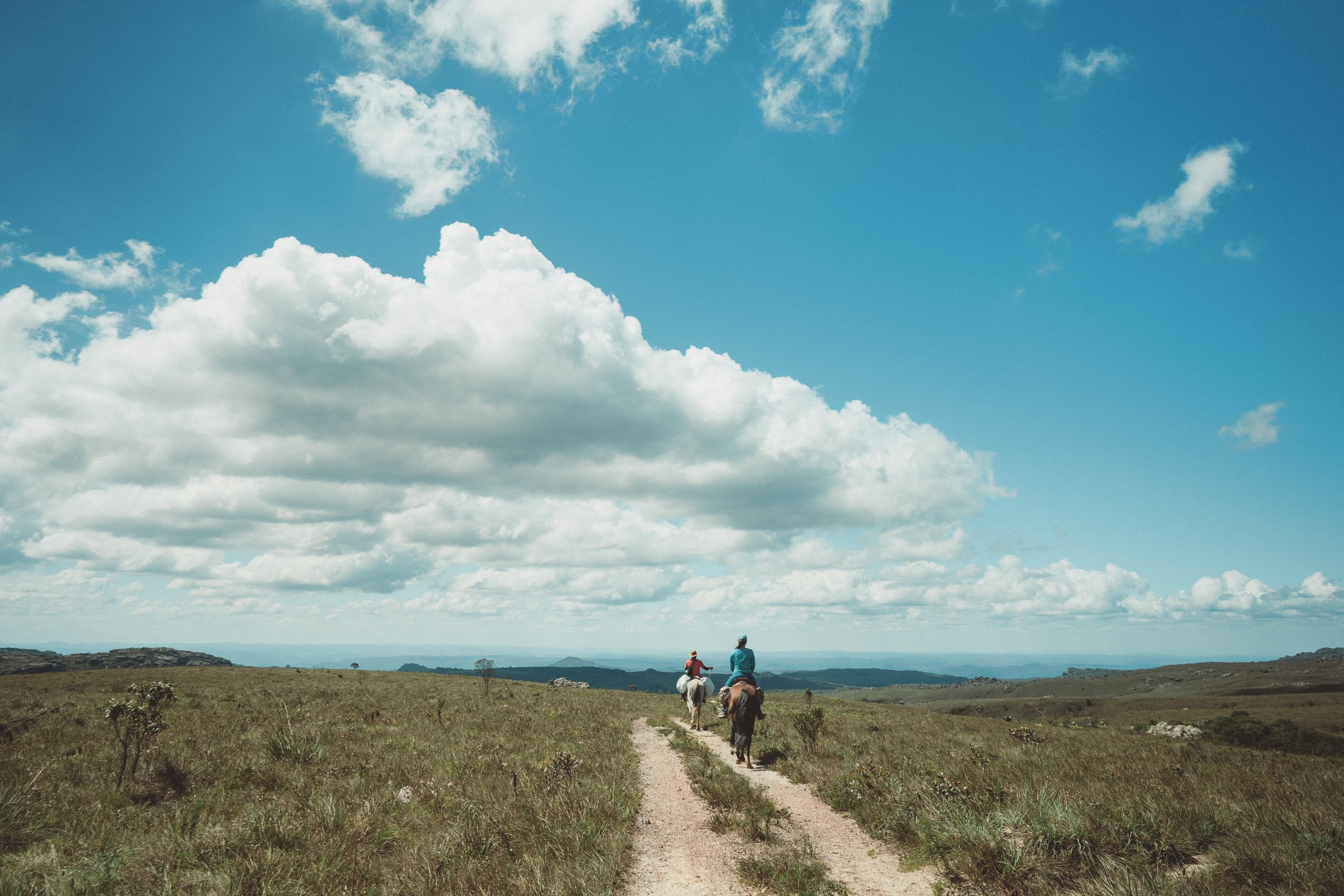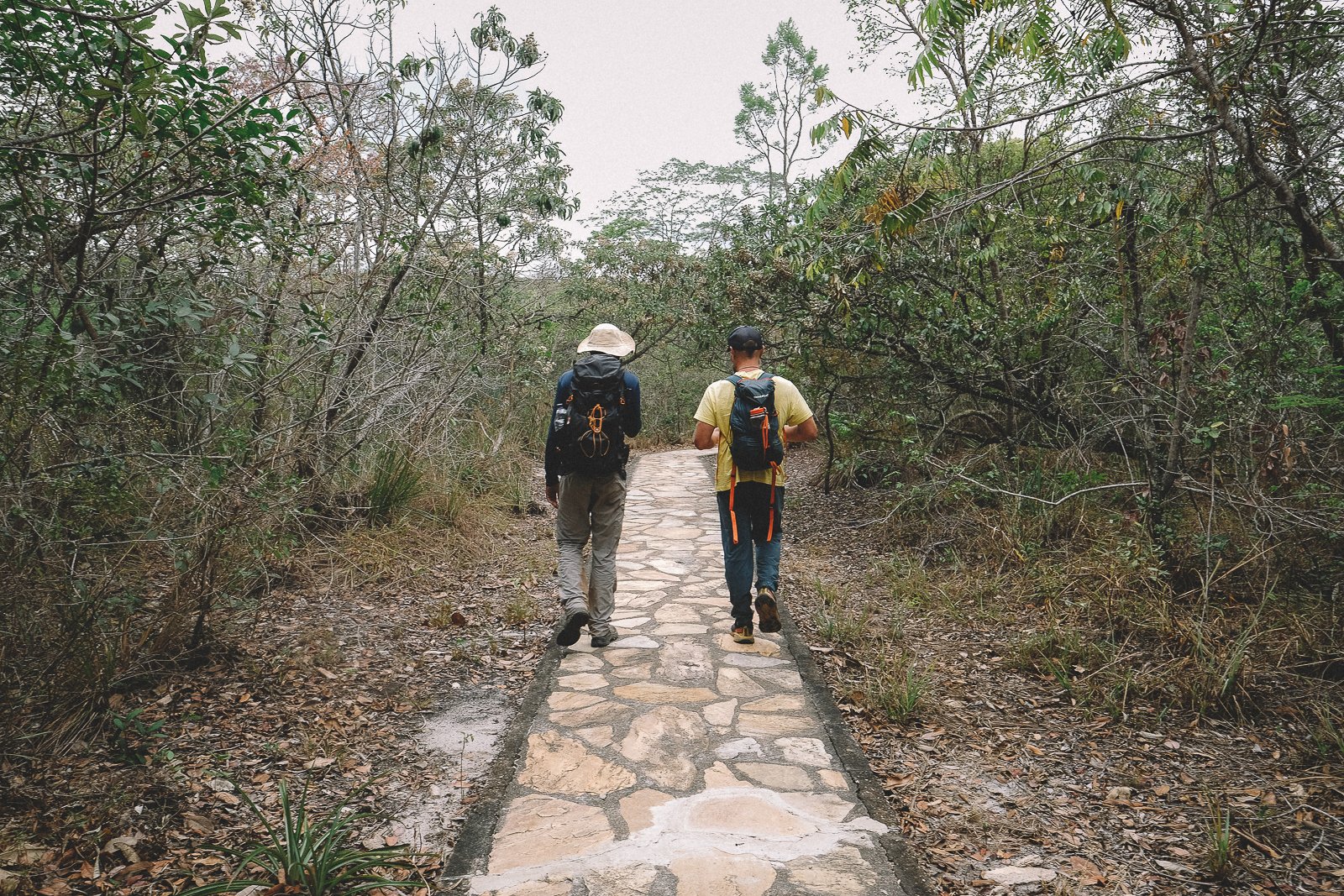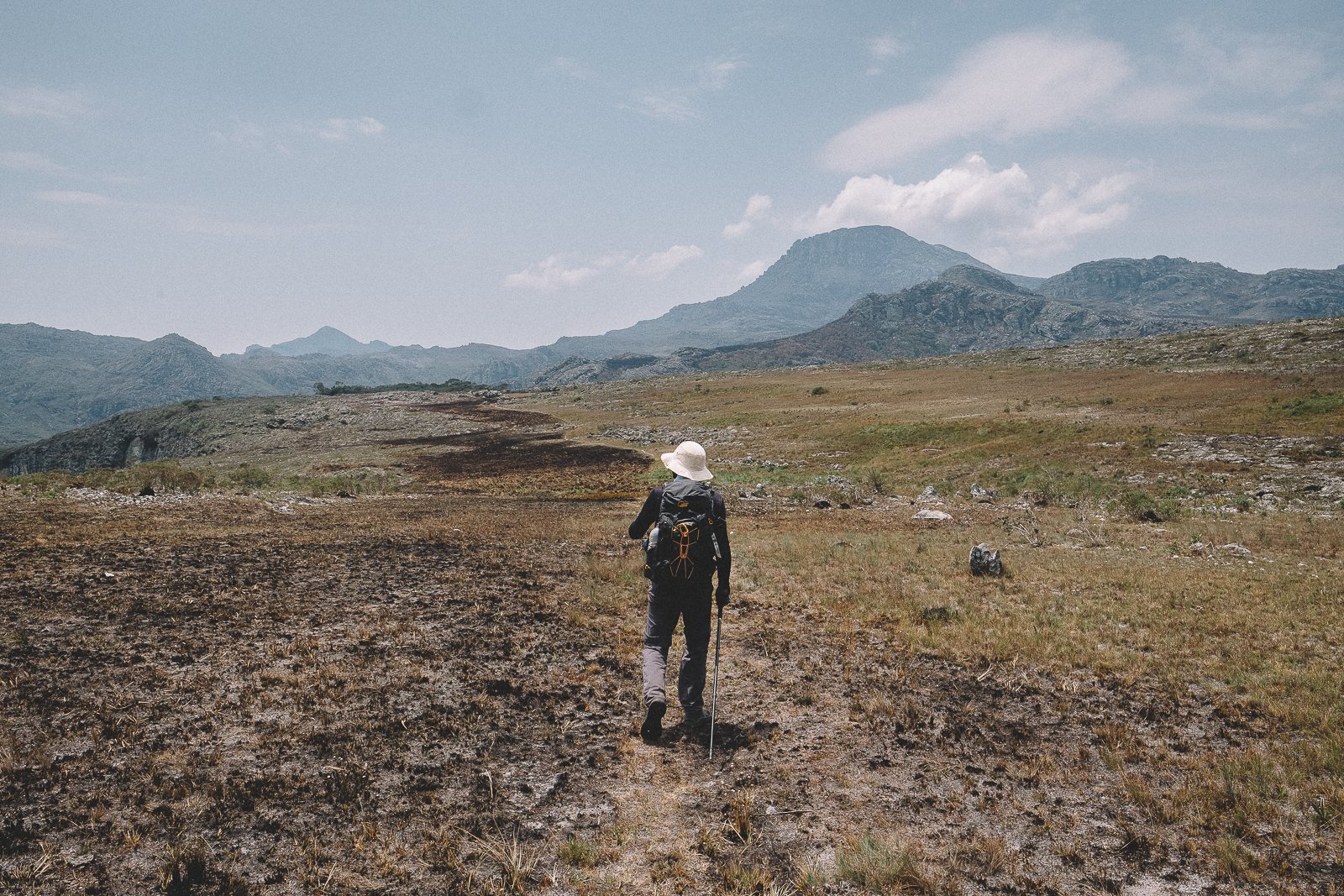
The Serra
Bespoke Treks, Rides & Overland Tours in the Southeastern Range of the Serra do Espinhaço Meridional
The Serra: The canonical Espinhaço Circuit
Drinkable white sand-beach waterfalls & pristine cola-colored rivers. A labyrinth of lost historic trails winding across Seussian landscapes. Soaring peaks, colonial-era hamlets, and a slow-motion carousel of lush mountain vistas.
We call our circuit in the southeastern range of the Espinhaço “The Serra” (literally, The Range) due to the proliferation of towering peaks and striking, wide open views. It is, in our minds, the quintessential circuit for any outdoorsperson wanting to experience what makes the Espinhaço special; the perfect stretch of trail to kick off a multi-week exploration of the region, but equally suited for, say, a 10-day jaunt in search of white sand beach-waterfalls & picturesque mountain villages.
If we were to design a single, classic circuit in the Espinhaço, it would look a lot like this. Each day on the trail here is a highlight; each evening, a fitting reward.
At a Glance
-
The mountainous region southeast of Diamantina is a pleasure to explore regardless of how you do it. It makes a particularly exceptional (we would say “world-class”) trekking and/or riding circuit, while its labyrinth of scenic dirt roads, numerous waterfalls, and mix of front- and backcountry communities lend themselves greatly to cultural & waterfall-based overland (4×4) tours.
There is a large range of accommodations in this part of the Espinhaço, from rustic homestays and wilderness refuges to charming pousadas & picturesque historic ranches.
The Serra stands out among our Circuits for its soaring peaks, exuberant vegetation (courtesy of its large pockets of Atlantic Rainforest), picturesque communities (including quilombola settlements and colonial-era mining towns), and plentiful white sand-beach waterfalls.
This part of the Espinhaço was the first to receive regional (Minas-based) tourism, and continues to see increases in overall visitation (although the majority of trails remain blissfully empty), making it a bit more accessible than some of our other Circuits. In particular, it makes for a fascinating contrast with the unbridled, little-visited wilderness areas of our Garden & Berço Circuits, which it borders to the east & northeast, respectively.
While the Espinhaço as a whole is full of natural beauty, warm culture, and fascinating history, we think The Serra provides its most striking & accessible introduction. If you have 10 days or less and are interested in trekking, riding, overlanding (with daily hikes to local waterfalls), we recommend you consider spending all your time here, with a night or two in Diamantina to bookend your trip.
If you have 11 days or more, are on your second visit to the region, or would like to explore the greater Espinhaço primarily by vehicle, we recommend adding extensions (or going further off the beaten path in the Serra).
-
The Serra is the Espinhaço’s most accessible circuit in terms of both logistics & infrastructure. However, it remains vastly undervisited by international travelers.
Expect soaring peaks (including the Espinhaço’s 3 highest); wide open views; Seussian (rupestrian) high savannah flora; pockets of lush Atlantic Rainforest; empty historic trails; little-traveled dirt roads; winding cola-colored rivers; white sand-beach waterfalls; picturesque colonial-era mining villages; welcoming quilombola communities; intimate homestays; hearty wood-fired homemade meals.
-
4 of the Mosaic’s most spectacular conservation units are located in The Serra, each of which can be traversed during trips: Itambé State Park, Rio Preto State Park, the Várzea do Lajeado e Serra do Raio State Natural Monument, and the Águas Vertentes State Environmental Protection Area.
-
The Serra represents one of the most beautiful & pronounced transitions between Cerrado (Brazilian Savannah) and Mata Atântica (Atlantic Rainforest) anywhere in Brazil.
-
Our guiding season officially runs from April 1 - October 30, although we may guide certain Bespoke itineraries outside of those months, as well.
The daily storms in the Serra do Espinhaço typically taper off in March, making April & May two of the most beautiful months to explore the region by any means: gushing waterfalls, exuberant vegetation, plentiful springs, and crossable rivers.
June & July are mild & dry, with near-perfect trail conditions: warm, sunny days and crisp, cool mountain weather in the evenings, with hardly a cloud in the sky. This is prime season for extended treks & rides. In 2025, we’ll be guiding our Serra Circuit Small Group Expedition (12 days).
The dry season reaches its zenith in August & September, making them wonderful months for exploring the region by foot & horseback: the savannah landscape is parched, dotted by colorful bouquets of flowers & cactus fruit, with gently-flowing waterfalls & easily crossable rivers.
The long dry season finally breaks in late September, making October & November unpredictable, but beautiful: the Cerrado is in full bloom, with daily storms creating wet & wild trail conditions and turning the landscape a thousand shades of green. These are great months for overland tours, and for trips that mix & match shorter treks with drives & rides.

Mule-driver trail (November)
Highlight: The Trails
Centuries of mule-driving, flower-picking, and mining for diamonds in the most remote nooks & crannies of the mountainous region southeast of Diamantina has blessed the region with an embarrassment of spectacular—and virtually empty—historic trails.
The Serra doesn’t just boast historic trails, though. Urban footpaths, nature trails (administered by two of Minas Gerais’s most exemplary State Parks), and bucolic, little-used backroads criss-cross the landscape in between waterfalls & communities, creating endless route possibilities.

Descending Pico do Itambé (November)
Highlight: Pico do Itambé
The Espinhaço’s unrivaled natural icon, Pico do Itambé (elev. 2,052 m) towers over the region like a citadel, living up to its billing as “the roof of the Espinhaço”. Protruding 1,102 m over the surrounding peaks, it draws a hard line between the Rio Jequitinhonha & Rio Doce basins, and a soft line between the Atlantic Rainforest & Cerrado biomes.
Taking in the 360-degree views after a challenging climb is one of the most satisfying & memorable moments of any journey in the Espinhaço, as is a golden hour descent.

Summitting Pico do Raio (April)
Highlight: Pico do Raio
The irony of summiting mighty Itambé is that the view on top (while undeniably epic) lacks Itambé itself. Meanwhile, just some 20 km away, the much smaller & more approachable Pico do Raio (Lightning Peak; elev. 1,387 m) presents an unbeatable view of not only Itambé, but of the nearby colonial hamlets of São Gonçalo do Rio das Pedras, Milho Verde, and Capivarí.
When you consider that the climb begins along one of the most gorgeous stretches of historic trail in the region and lends itself to a post-climb pitstop at a perfect patch of white sand-beach (replete with gently flowing cascade & natural infinity pool)… well, it could at least be argued that the experience gives Itambé a run for its money.

Descending into Mata dos Criolos (April)
Highlight: MatA dos Crioulos
The first time we visited this tiny quilombola enclave, set in a days-long valley between green peaks & pulsating with mountain springs, it redefined our idea of paradise. Delightfully hidden, full of lush vegetation, breezy palms & fruit trees, with drinkable cola-tinged waterfalls spilling gently around each bend, and sparsely populated by welcoming folks with tiny adobe homes featuring cast-iron chimneys piping smoke from wood-fired stoves, it’s the kind of place that makes you excited to be alive.
In a 100-km stretch of the Espinhaço in which each day seems impossible to top, Mata dos Crioulos might be unbeatable. There are few places on earth that we enjoy traveling through—or arriving at—more. If you should be so lucky as to find yourself there, we think you’ll agree.
Ze’s house, Mata dos Crioulos
Riding through Mata dos Crioulos (September)
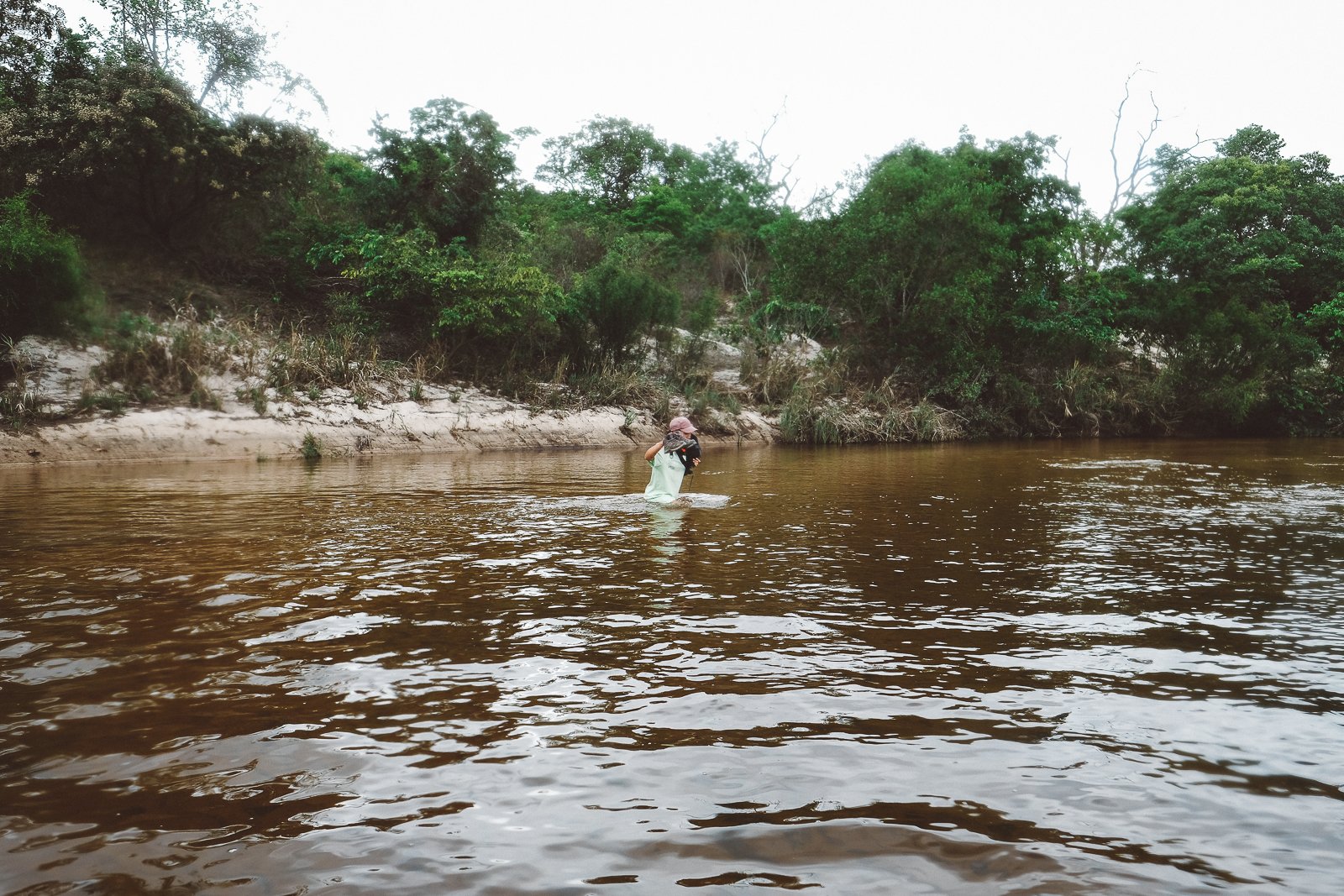
Crossing The Jequitinhonha (September)
Highlight: Crossing the Jequitinhonha River
The peaks & Parks get more glory, but nothing shaped this region or brought more fortune & glory more than the rivers that run through it, and none more so than the Jequitinhonha. Solemn yet dignified even after centuries of callous abuse, the river’s crystalline waters once ran rich enough with gemstones to both buoy a distant Empire and cradle a young nation. Today, irreparably scarred & forgotten, it remains forgiving enough to provide an economic lifeline for 500,000 Brazilians living downstream.
In theory, we’ll cross enough rivers, creeks, and streams during our trek for it to “get old”, but there’s something about gazing on the Jequitinhonha from its banks, then stepping into it, that will always be special.

Water Crossing Near Bica d’Agua (September)
Highlight: Riding Through the Hinterlands
If you’ve ever dreamed of steadying a sturdy steed through the brush, streams, and rocky mountain passes of the Brazilian hinterlands, now’s your chance: an epic traverse of the steep & spectacular Mato dos Crioulos region, followed by a long golden hour ride along the windswept high plains of Chapada do Couto, beckons.
Regardless of whose hoofs are moving, we recommend you catch your breath, take in the scenery, and immerse in the region’s long & storied tradition of tropeirismo.
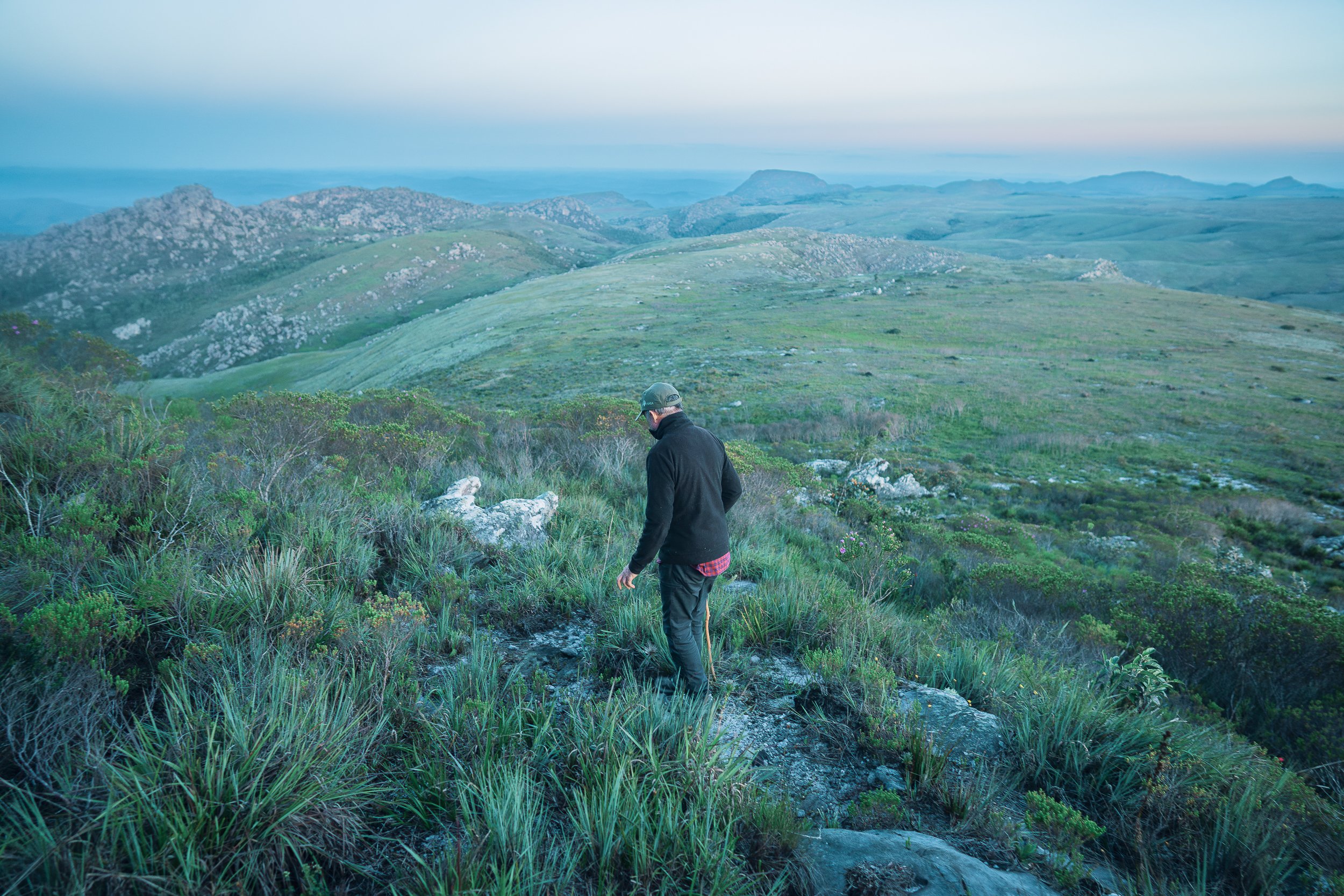
Descending Pico Dois Irmãos (April)
Highlight: Pico dois Irmãos
Twin peaks, attached at the hip, tower over the wind-swept high plateau of the Chapada do Couto, dividing the Black and Araçuai River Basins in the process. Known for centuries by locals as Serra Grande (Big Mountain; residents from the valley below could only see the taller of the twins), “Two Brothers Peak” (1,825 m) is not only the 3rd highest in the Espinhaço Meridional, it is a true pleasure to summit, with a long and gradual approach that gives way to a refreshingly short ascent. The stunning 360-degree view atop more than makes up for the effort, especially during Golden Hour. Here’s hoping your Journey passes this way.
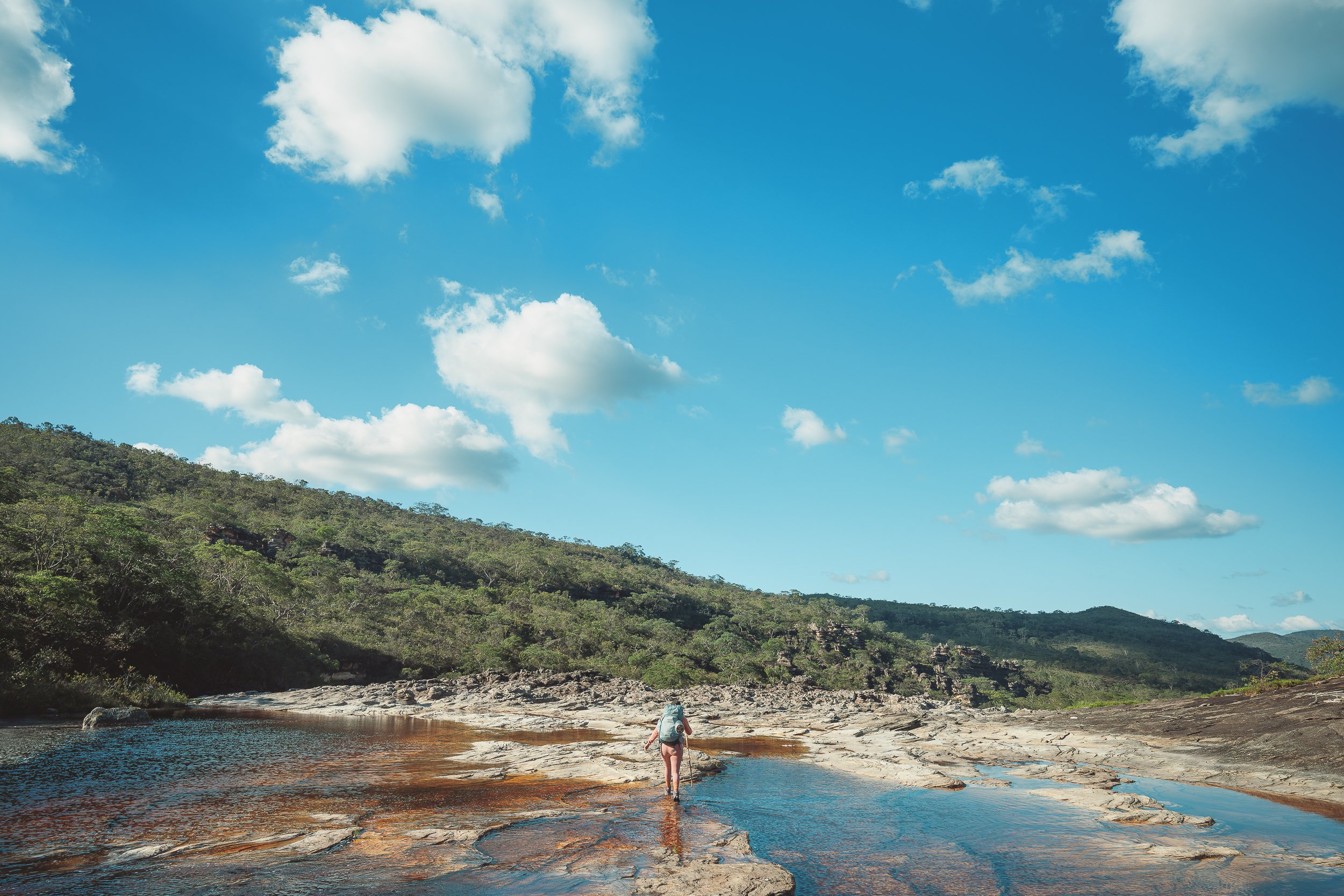
River Road, Rio Preto (April)
Highlight: Rio Preto State Park
The region’s first & most celebrated conservation unit, Rio Preto State Park harbors over 26,000 acres of immaculate cerrado, including a pristine stretch of its namesake river & a pair of striking waterfalls. We often spend days traversing the Park, from its hauntingly beautiful & little-visited southern reaches to its spectacular, water-blessed north, passing through sweeping canyons, steep escarpments, and fast-moving rivers, and alongside funky hoodoos and all manner of rocky outcrops along the way.
If it weren’t for the flowing fields of campo limpo and sparkling groves of sempre-vivas, you might swear we were in the U.S. Southwest. It’s a feast for the senses, and a fitting finale to any journey through the southeastern portion of the range.
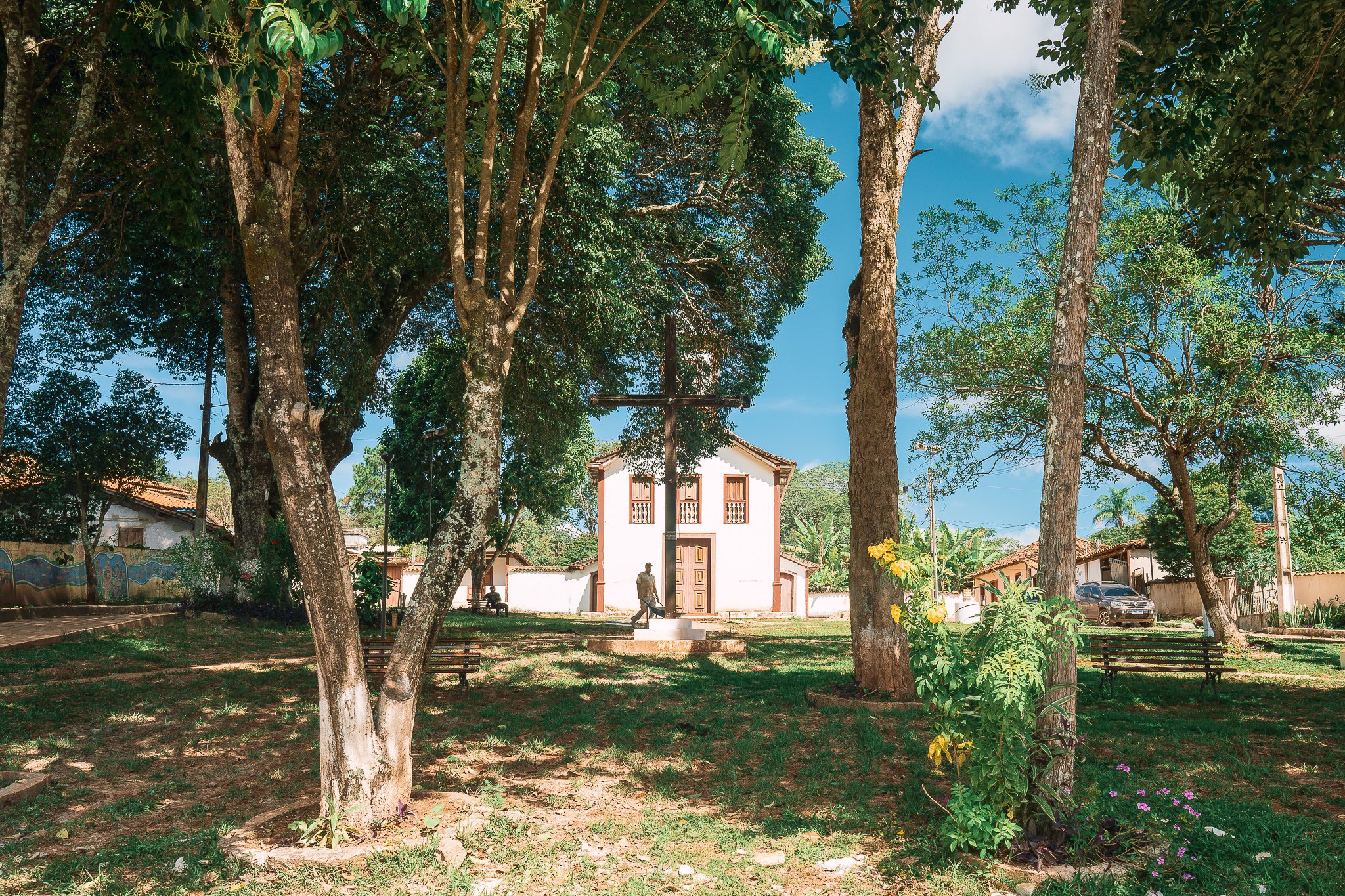
Highlight: São Gonçalo do rio das Pedras
Even in a region brimming with charming colonial-era towns, São Gonçalo do Rio das Pedras manages to feel special. Serro’s largest district is rustic, yet elegant; simple, yet mysterious; with a tranquility that lends itself to restful healing and a vibrance that beckons further exploration. There is magic in the air here, and its residents know it.
Arriving to a piping hot, all-you-can-eat wood-fired feast at the local pub after nightfall is, quite literally, the perfect ending to a long day on the trail. You may arrive exhausted, but if you’re anything like us, you’ll rarely have felt so alive.

Highlight: Serra da Maravilha
It doesn’t matter how you get there or from which direction you come, Serra da Maravilha (literally, Marvelous Mountain) is a sight to behold. Strikingly similar to Rio’s Sugarloaf Mountain—but with 1,000,000 less tourists per year—the postcard-perfect mountain and tiny hamlet of the same name (pop. < 10) are a well-kept secret even in the immediate region.
It’s a rest stop with a view, and should we decide to trek this particular stretch of trail during your Journey, we’ll have the privilege of taking in that view from a variety of angles.

Cachoeira do Tempo Perdido (July)
The Serra: Waterfalls & Water Attractions
Centuries of relentless mining along the waterways southeast of Diamantina have resulted in some of the Espinhaço’s most profoundly beautiful scenes. Exuberant Atlantic Rainforest vegetation, shimmering white sand beaches, cola-colored rivers, and pristine, gentle cascades conspire to provide the perfect swimming holes to compliment long days on the road & trail…
Cachoeira in June
Cachoeira In January
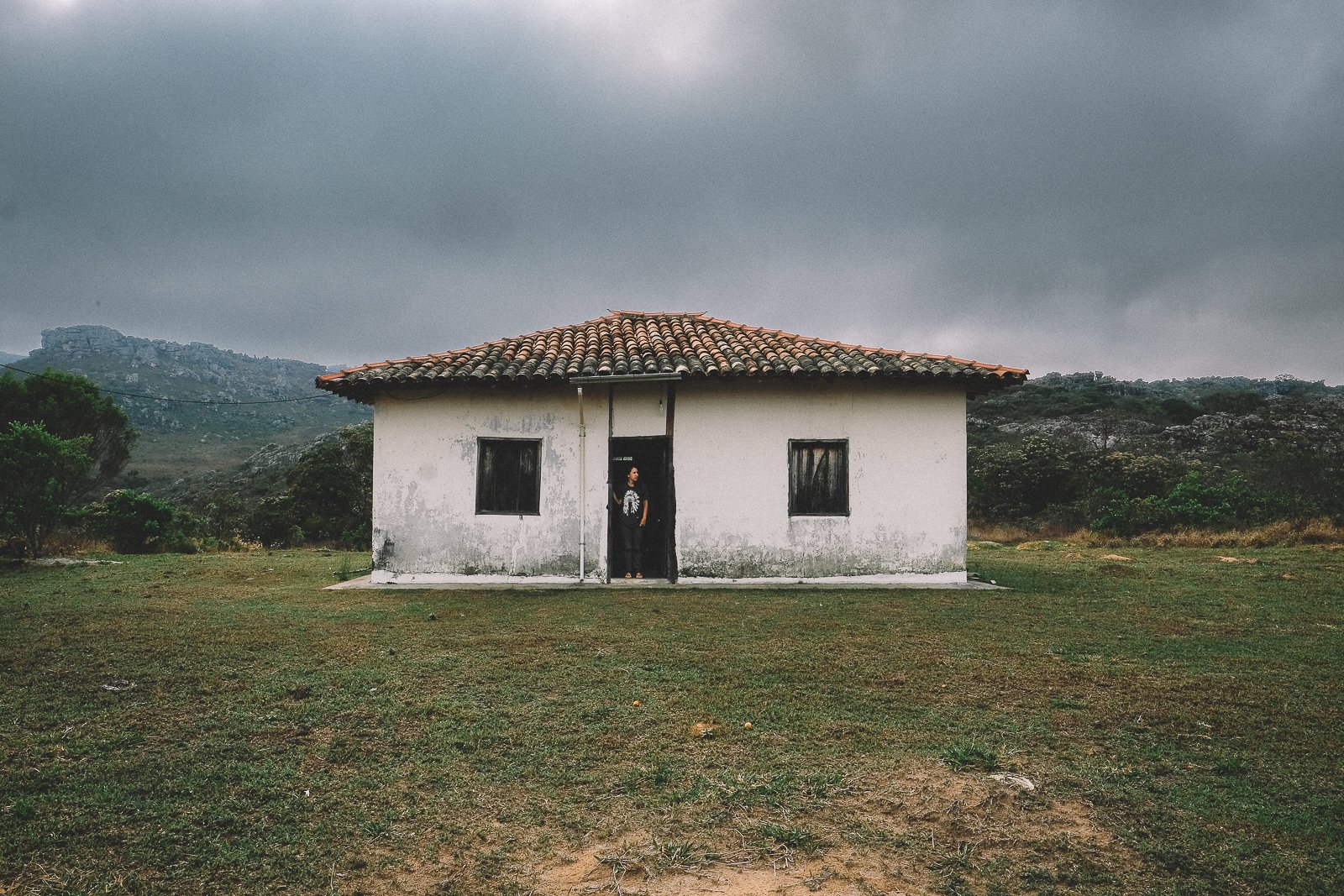
The Serra: WHere We Sleep
It wouldn’t be the quintessential Espinhaço circuit if it didn’t showcase the region’s diverse accommodations options. Luckily, with a diverse array of classy pousadas, welcoming homestays, scenic wilderness refuges, historic family-run hotels, and even a tidy Park campground (or chalet) or two, the Serra has it all…


